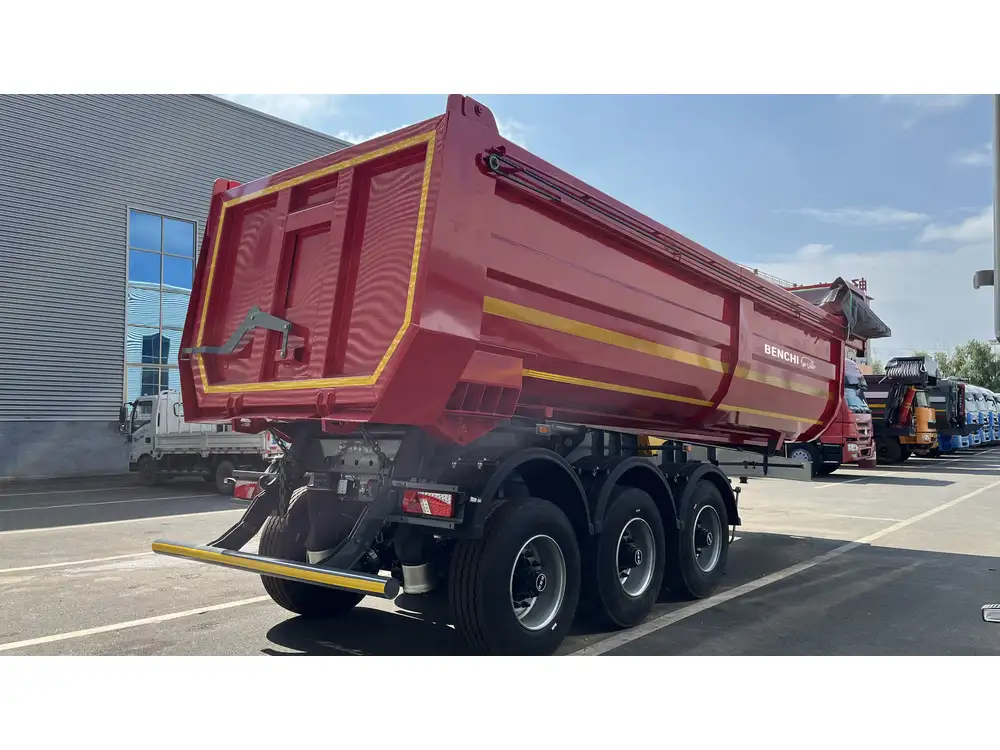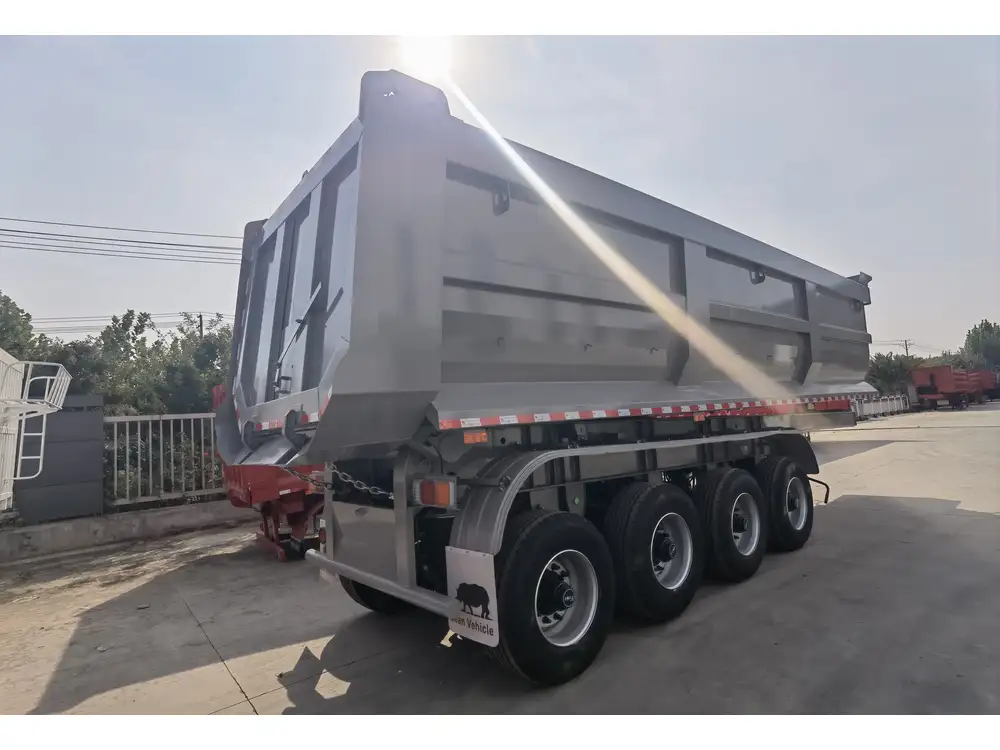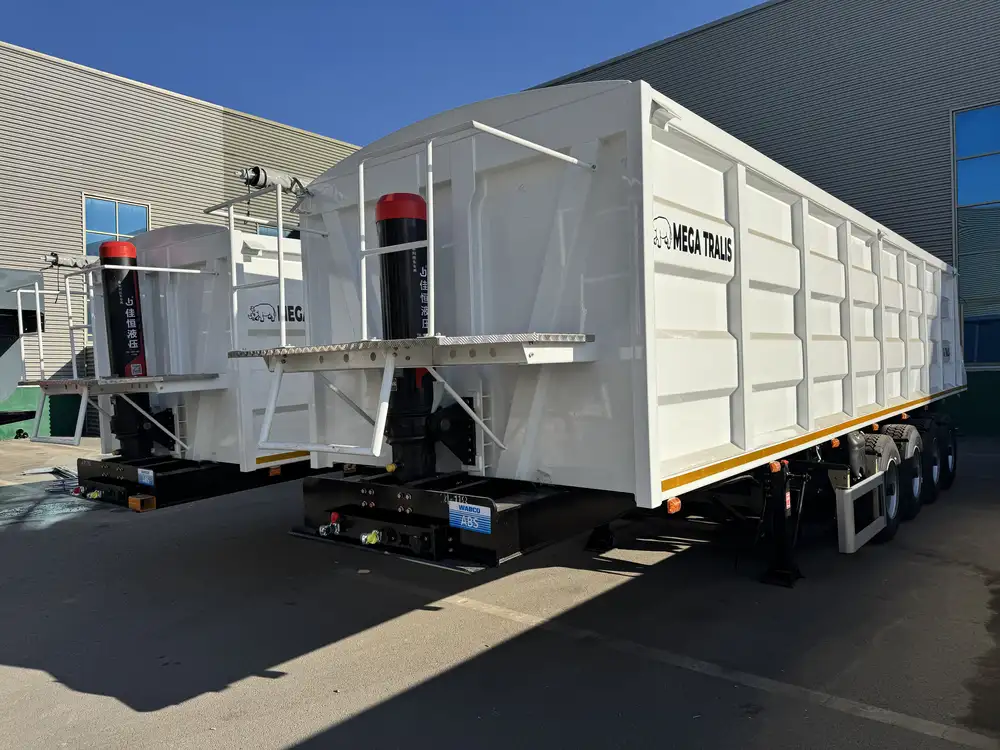In the expansive world of transportation, versatility is essential. For those in the logistics and manufacturing sectors, tanker trailers represent a critical component, especially for the safe transit of liquids. One of the most pressing inquiries in this domain—especially among those purchasing, utilizing, or designing semi-trailers—revolves around the question, “How tall is a tanker trailer?” This article aims to provide comprehensive insights into the dimensions, types, and regulations related to tanker trailers while addressing common challenges and inquiries faced by industry professionals.
What is a Tanker Trailer?
Tanker trailers are specialized semi-trailers designed for the transportation of liquids such as fuel, water, chemicals, and food products. The design of these trailers must accommodate the unique requirements of the liquid being transported, including temperature control and safety measures.
Types of Tanker Trailers
| Type of Tanker Trailer | Common Use | Dimensions |
|---|---|---|
| Fuel Tanker | Gasoline, diesel | Up to 53 feet in length |
| Chemical Tanker | Hazardous materials | Standard height around 13.5 feet |
| Food Grade Tanker | Dairy, juices | Typically 13.5 feet high |
| Water Tanker | Potable water | Varies, usually under 14 feet |
| Belly Dump Tanker | Sand, gravel | 12-14 feet high |

How Tall is a Typical Tanker Trailer?
The height of a tanker trailer is contingent on various factors, including its design, liquid capacity, and the regulatory standards enforced in different regions.
Standard Heights
In the United States, the Federal Highway Administration mandates that most commercial motor vehicles—including tankers—must adhere to a height restriction of 13.5 feet (approximately 4.1 meters) from the ground, excluding any permissible load. This standard height allows for safe travel under bridges, through tunnels, and other overhead structures.
However, some variations exist based on:
- Tanker Type: For example, food grade and chemical tankers are usually designed with a height around the 13.5-foot mark, whereas specific configurations may encroach slightly over this height due to structural or insulation requirements.
- Regional Regulations: Different regions may impose stricter or more lenient regulations; hence, understanding the local rules becomes paramount, especially for transcontinental transportation.
Dimensions of Individual Tanker Trailers
Individual tanker trailers come in various sizes and shapes, each tailored for specific types of cargo. Here’s a general breakdown of popular dimensions:
- Length: Standard tanker trailers usually reach lengths of 40 to 53 feet. In many jurisdictions, trailers above 48 feet might require special permits.
- Width: The typical width is 8.5 feet. Wider designs may exist for specific applications, though they usually face additional regulatory scrutiny.
- Tank Capacity: Capacities typically range between 5,000 to 11,600 gallons or more, depending on the liquid being transported.

Special Considerations
When determining the practical height of a tanker trailer, several factors must be assessed:
- Load Characteristics:
- The center of gravity must be low enough to avoid tipping risks.
- Material Construction:
- Materials utilized in manufacturing can influence overall height.
- Legal Compliance:
- Always check local regulations pertaining to vehicle dimensions to avoid fines.
Factors Affecting Tanker Trailer Dimensions
Material and Design
Tanker trailers often employ a variety of materials—aluminum, stainless steel, and carbon steel being the most common. The choice of material influences not only the weight and cost of the trailer but also its structural specifications that include height and width.

Functionality vs. Regulations
As previously mentioned, local and national regulations determine maximum height restrictions. Compliance ensures safety not only for the vehicle’s driver but also the general public.
Common Challenges in Tanker Trailer Utilization
Despite the established dimensions and regulatory frameworks, users encounter several challenges when working with tanker trailers.
1. Maneuverability Issues
Larger tanker trailers can present difficulties in navigation, particularly in urban areas with tight turns and height-restricted passages. As payload affects the overall height and weight, it becomes crucial for drivers to practice heightened caution.

2. Stability Concerns
Liquid cargo shifts during transit, especially in hilly or uneven terrain. Understanding the dynamics of liquid transportation—including the principles of sloshing—can help improve stability.
| Tip for Stability |
|---|
| Use baffles to minimize liquid movement. |
| Maintain a consistent speed while cornering. |
| Ensure proper loading techniques to maintain a low center of gravity. |
3. Regulatory Compliance
Navigating the intricate rules surrounding tanker transportation can be daunting. Companies must stay updated on state-specific regulations that govern vehicle dimensions, weights, and environmental regulations regarding the types of liquids transported.
The Future of Tanker Trailers
As transportation technology progresses, the tanker trailer industry is poised for significant advancements. The following trends should be noted:

Emerging Technologies
- Sensors and IoT: Implementing sensors can enhance real-time data monitoring—including fuel levels and pressure, thus improving safety and efficiency.
- Telematics: Using telematics systems allows for better routing and scheduling, which can reduce operational costs.
Sustainability Trends
With increasing regulations around environmental impacts, manufacturers are exploring ways to enhance fuel efficiency and reduce emissions. This quest for sustainability might lead to the advent of electric or hybrid tanker designs, which could substantially change the market landscape.
Conclusion
In conclusion, understanding how tall a tanker trailer needs to be is essential for safe and efficient operations within the logistics and transportation sectors. By considering the various heights, types, and regulations affecting tanker trailers, businesses can optimize their fleet while ensuring compliance. Making informed decisions regarding tanker trailer specifications will not only enhance operational performance but also mitigate risks associated with liquid cargo transportation.
Given the nuances that come with tanker trailers, it’s crucial for operators, manufacturers, and transportation professionals to remain updated on industry standards and advancements. When equipped with this knowledge, they can navigate the complexities of the logistics landscape with enhanced agility and confidence.



